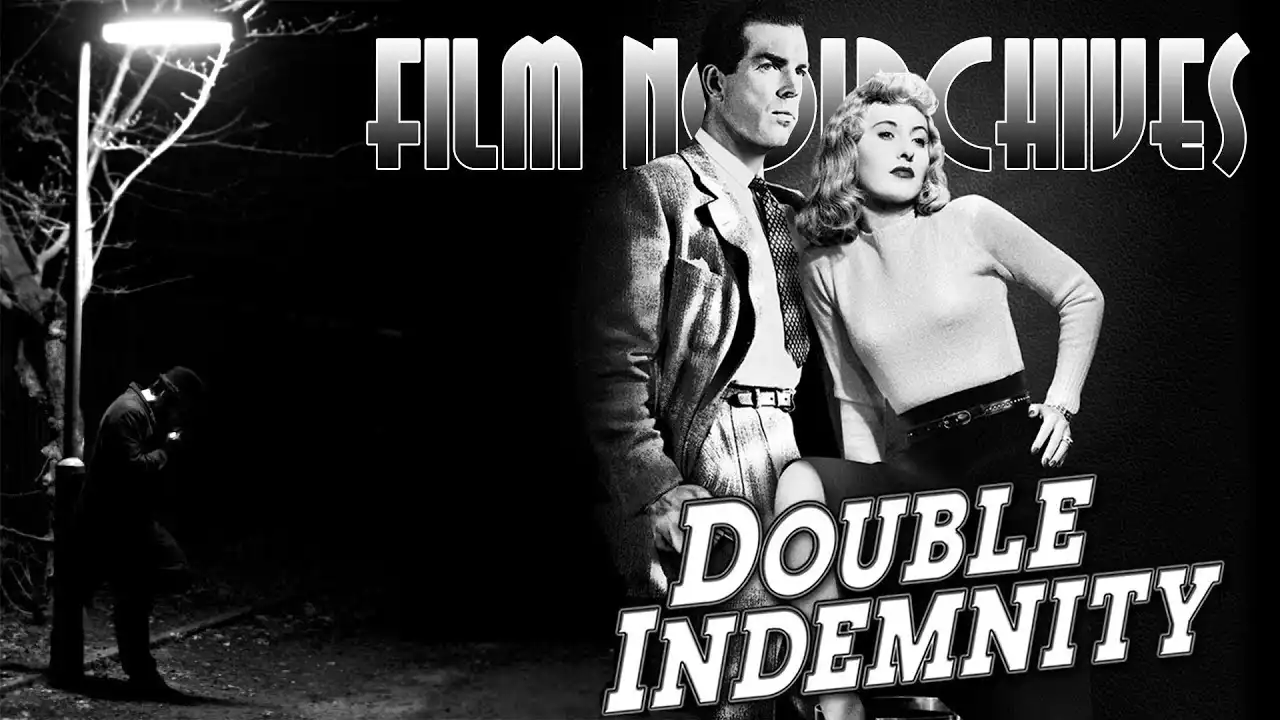Double Indemnity is a film noir released in 1944 and directed by Billy Wilder. The movie is set in the insurance industry and centers on a man who tries to kill his partner so that he can claim the double indemnity clause on his life insurance policy and also murder his partner’s wife so that he can be with her. The film is well known for its plot twist, which was not revealed until the end of the movie. And now, let’s see why Double Indemnity is a Film Noir:
A film noir is a dark movie
Film noir (which is French for “black film”) is a style of movie that is dark and mysterious. A film noir is usually set in a city at night and is often filmed in black and white. Film noirs often have a pessimistic view of life and usually feature people who are morally flawed or who have been pushed to the edge. Double Indemnity is a dark movie. The plot involves insurance fraud, a common theme in film noirs. In the plot of the movie, two people try to kill the wife of one of them so that they can claim the double indemnity clause on his life insurance policy. They are successful, but they are caught, and their plot unravels. The movie is filmed mostly at night in Los Angeles, which is often considered a noir city. Even the scenes that take place during the day are filmed with dark, shadowy lighting.
Double Indemnity has a dark plot
Double Indemnity is a dark movie. The plot involves insurance fraud and murder, which are both dark themes. In the plot of the movie, two people try to kill a man’s wife so that they can claim the double indemnity clause on his life insurance policy. They are successful, but they are caught and their plot unravels. In the plot of the movie, a man named Walter tries to kill his partner, an insurance agent named Barton, so that he can claim the double indemnity clause on his life insurance policy. Walter also plans to murder Barton’s wife, Phyllis, so that he can be with her. Walter is successful in killing Barton, but he is caught and brought to trial for the murder. One of the witnesses for the prosecution is Phyllis, who testifies against him. Walter tries to deny his guilt, but he can’t escape the plot twist that reveals that he killed Barton because Barton was already dead when he was shot.
Film noir often involves insurance fraud
Film noir often involves insurance fraud. In the plot of the movie, two people try to kill the wife of one of them so that they can claim the double indemnity clause on his life insurance policy. A double indemnity clause means that the insured person gets a two-fold payment – one amount if the insured person dies naturally and another amount if he is killed by an external agent (such as a murderer). A double indemnity clause is written into a life insurance policy because it is considered very unlikely that an insured person will die at a convenient time (e.g. when the policyholder wants him to die). A murder, however, is less likely to be convenient, and so the double indemnity clause is likely to be triggered.
Double Indemnity is shot in black and white
Double Indemnity is shot in black and white. A film noir is often shot in black and white, and the color black often figures into the plots of the movies. In the plot of the movie, Walter tries to kill Barton, who is black, so that he can claim the double indemnity clause on his life insurance policy. The color black and the word black often have negative connotations in many cultures. In the plot of the movie, the color black is associated with death. Walter tries to kill Barton, who is black, and so the color black is associated with death in the plot of the movie.
The lighting in Double Indemnity is dark and gloomy
The lighting in Double Indemnity is dark and gloomy. A film noir often has dark and gloomy lighting. In the plot of the movie, the color black and the word black are associated with death. The lighting in the movie is also dark and gloomy, so it is associated with death, as well. The lighting in the scenes set in the offices of the insurance company is particularly dark and gloomy. The offices are lit with fluorescent lights, which are known for their yellow glow and which emit very little light. The lighting in the scenes set in the home of Barton is also dark and gloomy. His home is lit with candles and a fireplace in the living room, which emits very little light.
Conclusion
Double Indemnity is a film noir. It is a dark movie that is shot in black and white and has dark and gloomy lighting. The plot involves insurance fraud, which is a common theme in film noirs. And finally, the title of the movie refers to the double indemnity clause that is written into life insurance policies - a clause that is likely to be triggered by a murder. If you’ve ever wondered why people watch old black-and-white movies, now you know, they’re film noirs!


 Looking At the Perfect Baby Sleepwear
Looking At the Perfect Baby Sleepwear
 The Best All-Natural Skincare Products
The Best All-Natural Skincare Products
 The Wonderful Architecture of The Taj Mahal
The Wonderful Architecture of The Taj Mahal What is the Definition of Film Noir?
What is the Definition of Film Noir? The Third Man a Masterpiece of Film Noir
The Third Man a Masterpiece of Film Noir Sunset Boulevard a Classic Film Noir
Sunset Boulevard a Classic Film Noir A Look at The Maltese Falcon
A Look at The Maltese Falcon